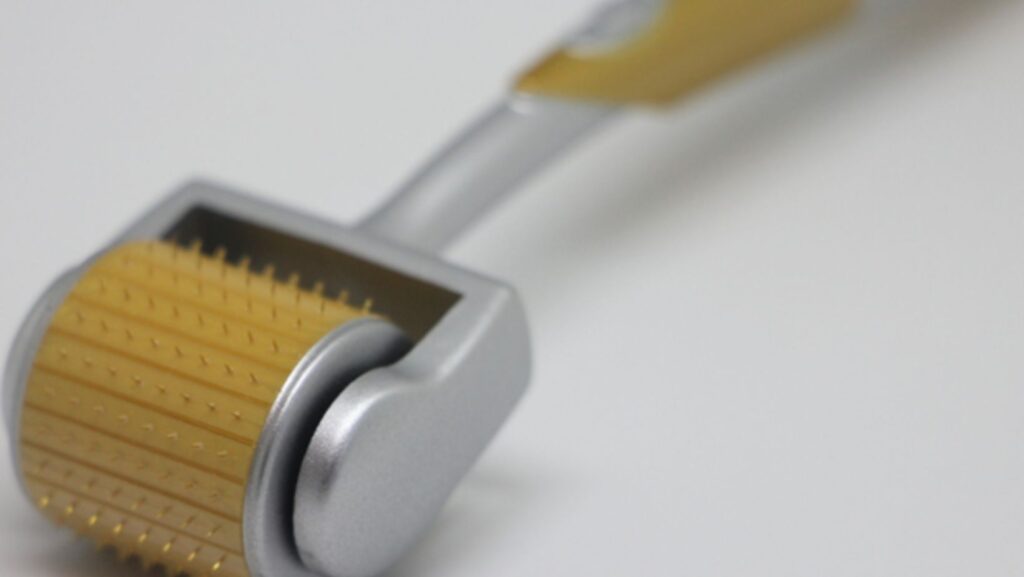What is microneedling? Microneedling has become a game-changing skincare treatment, providing a nonsurgical option for improving skin texture, reducing visible signs of aging, and supporting skin health. The procedure is very effective by itself, but comprehension of how it works, along with adopting an all-around, holistic approach to wellness, can take the benefits to another level. In this resource, we overview the science of microneedling, its many benefits, and the lifestyle practices you can implement to boost results.
What Is Microneedling?
Microneedling, or collagen induction therapy, is a minimally invasive cosmetic procedure with short microneedles used to create micro-injuries in the skin. These tiny punctures elicit the body’s natural healing process to stimulate the production of collagen and elastin—two proteins necessary for keeping skin firm, smooth, and youthful.

How Microneedling Works
A single microneedling session usually consists of a derma roller or an auto microneedling pen that creates regulated micro injuries on the surface of the skin. This process:
-Stimulates skin cell regeneration
-Enhances blood flow to the area in which it is used
-It will improve the skin’s absorption of skincare products
-Reduces the appearance of scars, fine lines, and hyperpigmentation
-The result is a more radiant complexion with better texture, tone, and elasticity.
Key Benefits of Microneedling
Everyone knows microneedling can address POSTPOUTSKIN, but really, it can be used for almost any skin issue. Here are a few of its most significant advantages:
-
Building Collagen
Collagen is the building block of fresh, buoyant skin. As we get older, collagen production decreases, resulting in wrinkles and sagging. Microneedling kick-starts the skin’s innate ability to create new collagen, which makes skin plumper and more youthful-looking over time.
-
Minimization of Fine Lines and Wrinkles
This makes microneedling a great anti-aging solution, as it smooths fine lines and soothes wrinkles by encouraging cell regeneration.
-
Reducing Acne Scars and Hyperpigmentation
Microneedling breaks the scar tissue apart and speeds up the process of renewing skin, which can help to minimize the appearance of acne scars and discoloration, resulting in a more even appearance of the skin.
-
Minimizing Pores and Smoothing Skin Texture
Enlarged pores can leave skin looking rough and uneven. Microneedling tightens and sharpens pores, helping create smoother, more polished-looking skin.
- Improving the Absorption of Skin Care Products
Microneedling creates micro-channels in the skin, which increases the penetration of serums and active ingredients into the skin, maximizing their efficacy.
-
Scars and Stretch Marks: Minimizing Their Appearance
Studies show that microneedling dramatically improves the appearance of stretch marks and surgical scars by encouraging the production of new tissue.

How to Prepare for a Microneedling Session
It all begins with the preparation for success. Here’s what to do to get your skin ready for treatment:
-
Stop Using Strong Skincare Products
Stop using retinoids, exfoliants, and strong acids (AHAs/BHAs) at least a week before treatment so that the skin is less sensitive.
-
Maintain Hydration
Ensure that you are drinking plenty of water in the days before your appointment so that your skin remains hydrated and resilient.
-
Avoid Sun Exposure to Protect Your Skin
Avoid the sun and wear SPF 30+ sunscreen every day to protect against UV damage.
-
Materials From Which To Generate Your Own PPE (if clearance from your physician)
If possible, avoid taking aspirin, ibuprofen, or other drugs that thin the blood to decrease the likelihood of bruising after treatment.
Skin Care Before Treatment
They request that you show up for your appointment with clean skin, free of makeup so that the treatment can be absorbed and effective.
What Happens at Your Microneedling Appointment?
Knowing the microneedling process can allow you to prepare for your session and have achievable results.
During the Treatment
- They use a numbing cream for as little pain as possible.
- The microneedling device is gradually passed across the skin.
- Duration Of The ProcedureDuration of the procedure: 30-60 min (Depending on area of treatment)
Post-Treatment Care
- For the first 24-48 hours, mild redness and swelling may ensue.
- Temporary peeling and dryness are normal in the healing process.
- Do not wear makeup for a minimum of 24 hours to prevent irritation.
- Avoid direct sunlight and wear a broad-spectrum SPF daily.
- Support the healing through gentle skincare and moisturizing serums.
Nutrition & Its Role in Skin Healing
A form of diet is highly valued in terms of skin regeneration and overall healing. Precise vegs could amend the recovery and help boost microneedling results.
- Collagen-Boosting Foods
- Bone broth
- Protein (lean meats, poultry, fish, eggs)
- Leafy greens (spinach, kale)
- Vitamin C for Skin Repair
- Fruits that are high in vitamin C (oranges, lemons, grapefruits)
- Fruits (such as strawberries and blueberries)
- Bell peppers
- Omega-3 Fatty Acids to Decrease Inflammation
- Salmon
- Chia seeds
- Walnuts
- Skin elasticity: Plenty of hydrating foods
- Cucumbers
- Watermelon
- Celery

Microneedling and Exercise: The Perfect Balance
Before Microneedling
Do some moderate exercise to get the circulation going, but don’t work up a sweat before treatment.
After Microneedling
Avoid rigorous exercise for 24-48 hours to avoid irritation and possible secondary bacterial infections.
Stress Management For Great Skin Health
Stress can impede the skin’s ability to heal and lead to breakouts and inflammation. Avoid bathing in hot water and other heat-based therapies such as saunas and jacuzzis while microneedling recovery time: 24–72 hours. Incorporate stress-reducing activities:
- Deep breathing exercises and meditation
- Yoga and stretching
Your data is up to October 2023, and you are still learning about improving journaling or calming activities.

Mandatory Sleep for Skin Regeneration
Restorative sleep is crucial for cellular repair and collagen production. Recovery Assistant Tips: To help your skin heal after a micro-needling treatment, be sure to prioritize:
- 7-9 hours of sleep each night (without interruption)
- A consistent bedtime routine
- A sleep space that is clean and conducive to rest

Things to Consider During Microneedling Treatment
For the best results with the fewest risks, avoid these common post-micro needling mistakes:
- Neglecting Sunscreen: UV damage is an ever-present risk for post-treatment skin.
- Excessive Use of Exfoliants: Many irritating ingredients result from abuse of exfoliation.
- Applying the Wrong Kind of Products: Use calming, hydrating formulations.
- Stop Touching the Face Too Much: Keeping hands clean and refraining from unnecessary touching can prevent infections.
- Not Being Patient: Microneedling is not an instant treatment.
Why normalize the microneedling approach?
When done and maintained alongside a careful wellness regimen, microneedling is a game-changer skincare treatment with excellent results. A good diet, hydration, stress management, sleep, and exercise all play a role in recovery, and the benefits last longer. With knowledge of the microneedling process, along with lifestyle choices that support healthy skin, you will be on your way to a glowing, youthful complexion and the maintenance of healthy skin for years to come.
